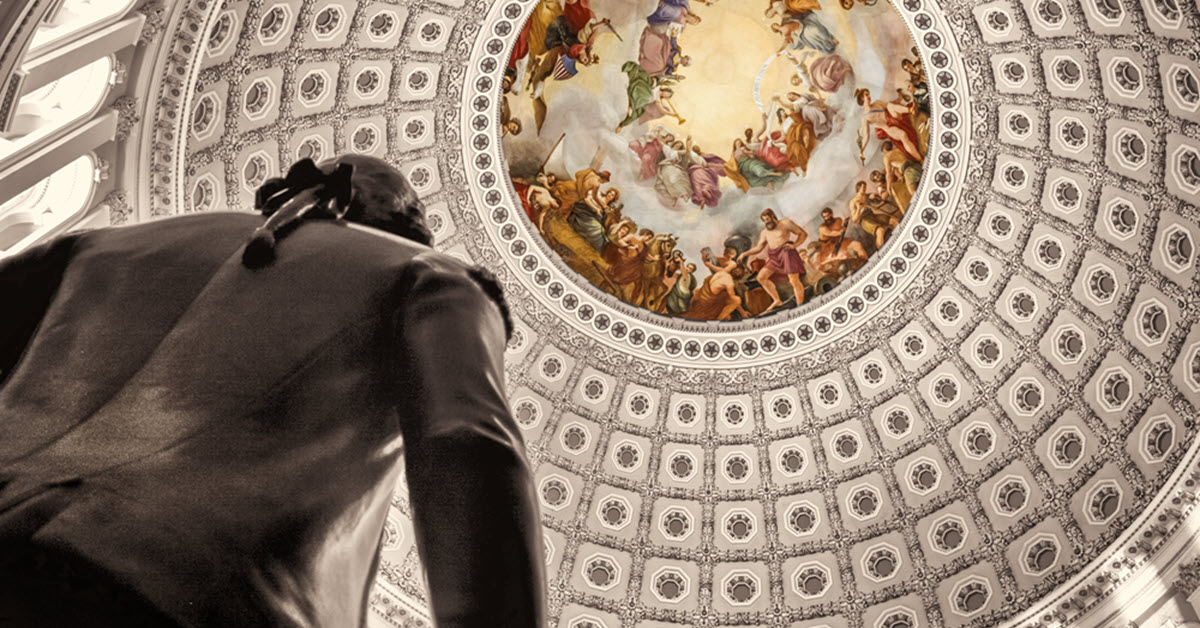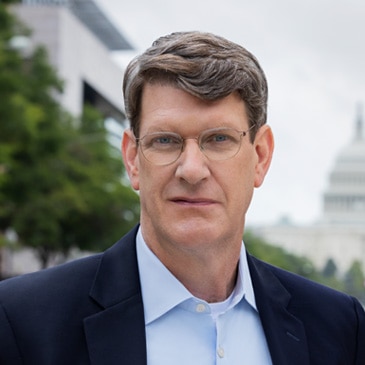Tariffs, Taxes, and Tension: Trump's First 100 Days Back in Office

The first four-plus months of President Donald Trump's second presidency have been nothing if not action-packed. A record 157 executive orders have been signed. The markets suffered the worst first 100 days of any president's term since 1974 before surging more than 7% in May. Economic growth was negative in the first quarter. Border crossings are way down. Tariffs are way up. What's going on from a policy perspective in Washington has had a more direct impact at the markets than at any other time in decades.
It's been a head-spinning time for investors trying to make sense of it all amidst higher market volatility and huge swings in the market. The key question for investors, advisers and retirement plan sponsors is how much of everything going on in the nation's capital will really impact the markets over the longer run. Here's a quick look at some of the most important issues to watch.
Tariffs dominate the economic discussion
The president's sweeping tariff plan includes tariffs on imports from Canada and Mexico; new tariffs on steel, aluminum, cars and car parts; and tariffs on imports from China that briefly reached a staggering 145% until settling at 30% in early May. But it is the universal 10% tariff on all imports, implemented on April 5, that may have the broadest impact. That provision alone brings the effective US tariff rate to its highest point in nearly a century. The White House's plan for even higher "reciprocal" tariffs on about 90 countries would increase the impact further, but the president paused those for 90 days until early July to give an opportunity for country-by-country trade deals to be negotiated. Of course, much of tariff regime was upended on May 28, when the US Court of International Trade rules that the across-the-board tariffs, the reciprocal tariffs and other tariffs on Canada, China and Mexico were unlawful. The appeals court subsequently paused that ruling, and it's likely the case will end up in the Supreme Court later this year.
Expect tariffs to continue to dominate the economic discussion for the next several months. The president is attempting to fundamentally reshape the US economy, hoping to encourage companies to manufacture more products domestically. Economists are skeptical that will be the outcome. What's clear, however, is that markets have been rattled, diplomatic relations are strained, the dollar's value has declined, consumer confidence has softened and companies are finding it difficult to plan. The risk of a recession rose markedly, though it has eased as some of the tariffs have been paused or lowered. And even if the courts ultimately rule against some of the tariffs, the administration has other tools at its disposal to impose temporary tariffs and sector-specific tariffs. The tariff debate is not ending any time soon.
Massive tax and spending bill passes House, heads to the Senate
While tariffs and other executive actions dominated the action in Washington for months, the focus has now returned to Capitol Hill, where Congress is debating a massive tax and spending bill that encompasses much of the president's domestic agenda. On May 22, the House of Representatives narrowly passed the "One Big Beautiful Bill," which now moves on to the Senate. Key tax provisions of the bill include:
- Makes permanent the 2017 tax cuts. The individual provisions in 2017's Tax Cuts and Jobs Act, which was passed during Trump's first administration, are set to expire at the end of 2025 without congressional action. The bill makes those provisions permanent, including the lower individual income tax rates.
- Increased standard deduction and increased child tax credit: For 2025 through 2028, both provisions will be boosted slightly.
- Estate tax: Beginning in 2026, the amount of assets that can be inherited without triggering the estate tax will rise to $15 million. That figure will be indexed to inflation in subsequent years.
- No tax on tip income. A key pledge from Trump's 2024 campaign, tips will not be taxed for 2025 through 2028, subject to a number of restrictions on who is eligible.
- No tax on overtime hours. Another pledge from the president's campaign, there will be no tax on overtime hours worked for 2025 through 2028, again subject to restrictions and income limitations.
- Enhanced deduction for seniors. Seniors ages 65 and older will receive a special deduction of $4,000 for 2025 through 2028. The deduction applies to those who use the standard deduction as well as those who itemize their deductions, but only those with a modified adjusted gross income under $75,000 ($150,000 for couples) are eligible. The provision is seen as a replacement for the "no tax on Social Security benefits" pledge. Budget rules make it impossible to implement the no tax pledge, at least in this particular bill.
- No tax on car loan interest. Taxpayers are eligible for a deduction of up to $10,000 a year for interest paid on an auto loan through 2028.
- Increases the state and local tax (SALT) deduction cap. The bill raises the cap to $40,000 from $10,000 for filers earning less than $500,000. This was a critical provision for securing the votes of a small group of House Republicans representing high-tax states like California, New Jersey and New York.
The bill, which also includes significant spending cuts to Medicaid, SNAP (food stamps) and other domestic programs, as well as a $4 trillion increase in the debt ceiling, has now moved to the Senate. Senators are expected to make numerous changes, which will mean it has to go back to the House as both chambers must pass the exact same legislation before it can be sent to the president for his signature. Republican leaders hope to pass the final version of the bill before July 4, but that's likely optimistic. The real deadline is likely the end of July. Treasury Secretary Scott Bessent has indicated the US will default on its debts for the first time in history if the debt ceiling is not raised by mid-August. Since Congress is traditionally in recess for the month of August, most observers see the end of July as the must-pass deadline for the One Big Beautiful Bill.
Retirement savings developments
While the massive tax legislation has few provisions that directly impact retirement savings, there have been some recent developments worth keeping an eye on. On May 20, the House Financial Services Committee overwhelmingly approved the "Retirement Fairness for Charities and Educational Institutions Act", a bill that would allow 403(b) plans to invest in collective investment trusts (CITs), fixes an omission from the 2022 SECURE Act 2.0 and puts 403(b) plans on equal footing with 401(k)s and other retirement plans. The next step is a vote by the full House of Representatives, where it is expected to pass easily, but there is no timeline yet for when that might happen.
Meanwhile, the Department of Labor (DOL) told the courts recently on May 28 it would overturn Biden-era guidance that allowed plan sponsors to consider environmental, social and governance (ESG) factors when choosing investment options for a plan. The administration also announced that it was rescinding Biden-era guidance that discouraged 401(k) plans from offering cryptocurrency investments. The 2022 guidance threatened plan sponsors with investigations if they offered crypto investments. The recent DOL action returns the agency to neutrality, with the new statement specifically noting that the department will neither endorse nor disapprove of specific investment options in a plan. At the same time, President Trump is reportedly considering an executive order that would allow retirement plans to invest in private equity. Such an order would likely return to a 2020 directive from Trump's first presidency that indicated that plan sponsors would not be violating their fiduciary responsibilities if they offered private equity as an investment option.
The never-ending topic of the DOL's fiduciary rule remains as uncertain as ever. The so-called "Retirement Security Rule" was approved in 2024 during the previous administration, but was paused nationwide by two different federal courts prior to it going into effect in September 2024. Those cases remain ongoing. Most recently, the court granted the Department of Labor additional time, until mid-June, to decide how it wants to proceed in the cases, which have been consolidated. It's widely believed that the fiduciary rule will ultimately be tossed out by the courts. Assuming that happens, however, current Labor Department officials will have to decide whether and how to proceed with another effort to define who is a fiduciary in the retirement savings context—a topic that has been the subject of intense debate across four presidential administrations.
Over at the Securities and Exchange Commission (SEC), Paul Atkins took the oath of office as chairman in late April. Atkins served as a commissioner from 2002-2008, during the George W. Bush administration, and then founded and ran a well-regarded financial consulting firm in Washington until returning to the agency. The SEC's regulatory priorities could not be more different from the previous administration. Atkins is also taking over a notably slimmed-down agency. An estimated 15% of employees took early retirement or a buyout package earlier this year, part of the Department of Government Efficiency (DOGE)-led effort to reduce the size of the federal government. But decades of experience, expertise and institutional knowledge across all parts of the agency has walked out the door.
Atkins is expected to take a much lighter regulatory approach to the markets than his predecessor, Gary Gensler. Several major regulatory initiatives from the previous administration, including public company climate risk disclosure, equity market structure overhaul and ESG-related rules are being scrapped, shelved or rolled back. Enforcement priorities are also expected to change under the new leadership. And Atkins is expected to prioritize crafting a regulatory framework for cryptocurrency that should set rules of the road, increase investor protections and clarify who is in charge of oversight of the industry.
 By
By